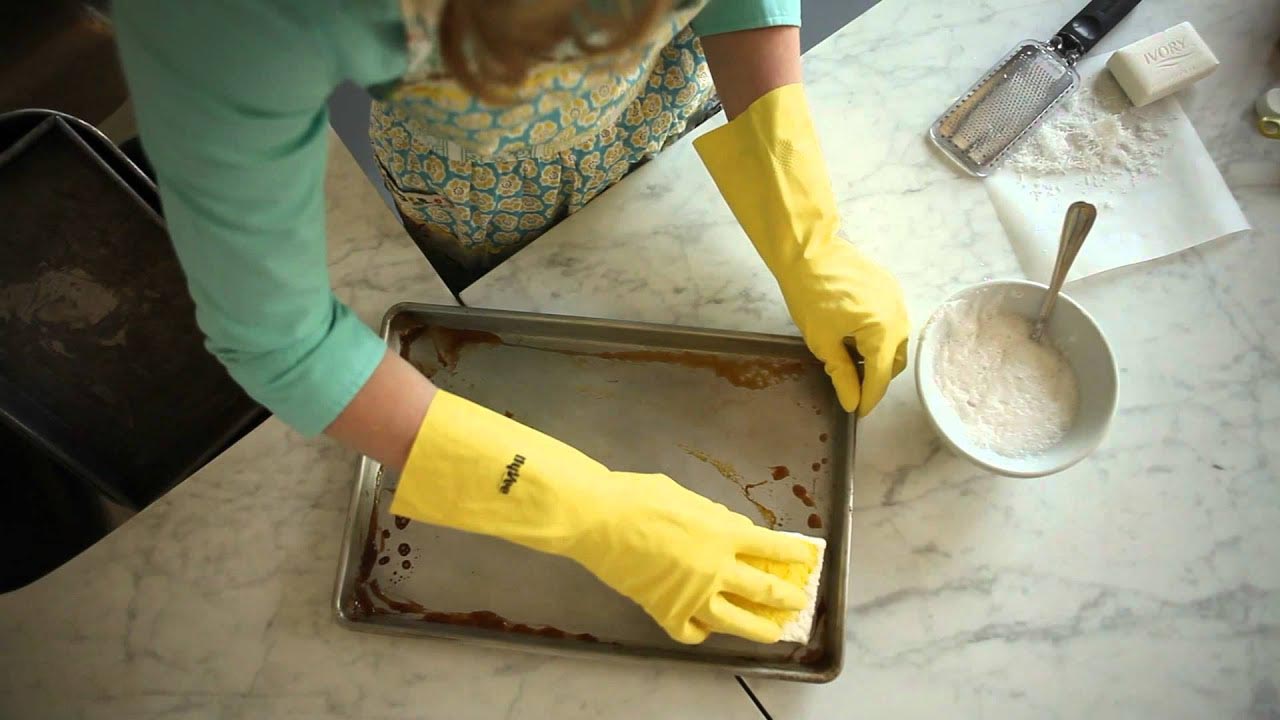Home>Dining>Tableware>In Which Direction Should You Pass Serving Dishes?


Tableware
In Which Direction Should You Pass Serving Dishes?
Modified: January 4, 2024
Discover the proper etiquette for passing ##tableware## at the dining table. Learn which direction to pass serving dishes for a seamless dining experience.
(Many of the links in this article redirect to a specific reviewed product. Your purchase of these products through affiliate links helps to generate commission for Storables.com, at no extra cost. Learn more)
Introduction
Welcome to the world of tableware etiquette! Whether you’re hosting a formal dinner party, attending a fancy event, or simply enjoying a meal with friends and family, understanding the proper ways to handle serving dishes is essential. The placement and direction of these dishes can greatly enhance the overall dining experience and showcase your attention to detail.
In this article, we will explore the age-old question: “In which direction should you pass serving dishes?” We will delve into the traditional etiquette surrounding this practice, as well as the more modern approaches that have emerged. By the end, you will have a well-rounded understanding of how to navigate this aspect of tableware etiquette with confidence and finesse.
Key Takeaways:
- Traditional etiquette suggests passing serving dishes clockwise to ensure smooth service and reduce spills, while leaving serving utensils with the dish for convenience and efficiency.
- Modern tableware etiquette allows for flexibility, considering factors like table shape, guest seating, and formality, prioritizing guest comfort and a harmonious dining experience.
Read more: What Are Serving Dishes?
Traditional Etiquette
In traditional tableware etiquette, there are guidelines regarding the direction in which you should pass serving dishes. The most common approach is to pass the dish to the right, moving it clockwise around the table.
This tradition is rooted in historical customs and has practical reasons behind it. In the past, most people were right-handed, so passing the dish to the right allowed for easier handling and reduced the chances of accidents or spills.
Furthermore, passing dishes in a clockwise direction ensures a smooth flow of service and eliminates any confusion or interruption during the meal. Guests can anticipate the direction in which the dish will be passed, making the process more efficient and organized.
Another aspect of traditional etiquette to consider is the use of serving utensils. Ideally, each dish should have its own designated serving utensil, such as a spoon or fork. When passing the dish, it is customary to leave the serving utensil with it, allowing the next person to use it without the need for additional utensils.
It is worth mentioning that in formal dining settings, especially during multi-course meals, there may be a designated server or butler responsible for the proper placement and passing of the dishes. In such cases, guests simply wait for the server to handle the process, following their lead.
Modern Approach
In modern times, tableware etiquette has evolved, and the strict adherence to traditional rules may have become more relaxed. While the traditional approach of passing serving dishes clockwise is still widely followed, there is now more flexibility to accommodate various dining situations and personal preferences.
One modern approach is to consider the placement of the individuals seated at the table. Instead of strictly adhering to a clockwise direction, dishes can be passed to the person who is closest to them, regardless of the direction. This approach allows for a more fluid and intuitive flow of service.
Additionally, some argue that passing dishes counterclockwise can make it easier for left-handed guests to handle the dishes. This thoughtful consideration demonstrates the inclusivity and adaptability of modern tableware etiquette.
Furthermore, in informal or casual settings, it is common for guests to simply help themselves to the serving dishes on the table instead of passing them around. This approach promotes a more relaxed and communal dining experience, where everyone can serve themselves according to their own preferences.
It is important to note that regardless of the specific approach chosen, respect for others should be the guiding principle. Being aware of the needs and preferences of guests and ensuring that everyone at the table has easy access to the dishes is key.
Ultimately, the modern approach to passing serving dishes incorporates a blend of tradition and flexibility, allowing for a more personalized and enjoyable dining experience.
Pass serving dishes to the right to avoid collisions and confusion. This allows for a smooth and efficient flow of food around the table.
Factors to Consider
When deciding in which direction to pass serving dishes, there are several factors to consider. These factors can help determine the most appropriate approach based on the specific dining situation:
- Table Shape and Size: The shape and size of the table can influence the direction in which dishes are passed. For example, on a round table, it may be easier to pass dishes in a counterclockwise direction, as it allows for a more natural flow. On a long rectangular table, passing dishes from end to end may be more practical.
- Guest Seating Arrangement: The seating arrangement of the guests can also play a role. If there are guests with specific dietary restrictions or preferences who need easier access to certain dishes, it may be more considerate to pass those dishes directly to them, regardless of the traditional direction.
- Formality of the Occasion: The formality of the occasion can impact the expectations for tableware etiquette. In formal settings, adhering to traditional rules may be more appropriate, while in casual gatherings, there is more room for flexibility and personal preference.
- Guest Comfort: Ultimately, the comfort and convenience of the guests should be a top priority. Consider their ease of access to the dishes and whether the chosen direction of passing enhances the overall dining experience for everyone.
- Host’s Preference: As the host, you have the freedom to decide on the approach that best suits your style and the dynamics of the gathering. Communicate your preferences to your guests beforehand to ensure a smooth and harmonious dining experience.
By considering these factors, you can make an informed decision on how to pass serving dishes that best fits the unique circumstances of your dining occasion.
Best Practices
While there is room for flexibility in tableware etiquette, there are some best practices to keep in mind when passing serving dishes:
- Communicate with Guests: Before the meal begins, communicate any specific instructions or preferences regarding the passing of serving dishes. This ensures everyone is on the same page and reduces any confusion or hesitation.
- Pass in a Smooth and Polite Manner: When passing a serving dish, do so in a smooth and polite manner. Hold the dish from the bottom or use a serving platter if available. Avoid reaching across other guests and make eye contact with the recipient as you pass the dish to them.
- Respect Personal Space: Be mindful of personal space when passing dishes. Avoid leaning over or reaching too far across the table, as this can cause discomfort for other guests.
- Offer Assistance: If a guest requests a specific dish or needs assistance in passing it, be ready to offer your help. This gesture demonstrates thoughtfulness and consideration for others.
- Leave Serving Utensils with the Dish: When passing a serving dish, leave the appropriate serving utensils with it. This ensures that each guest has everything they need to serve themselves, without the need for additional utensils.
- Be Mindful of Dietary Restrictions: If you are aware of any dietary restrictions or allergies among your guests, take extra care in passing dishes to ensure they can safely enjoy their meal without any cross-contamination.
- Consider the Flow of the Meal: Pay attention to the flow of the meal and the timing of when dishes should be passed. Coordinate with other guests or servers to ensure a smooth and timely dining experience for everyone.
By following these best practices, you can create a refined and considerate atmosphere at your dining table, allowing your guests to fully enjoy the meal and the company.
Read more: Which Direction Should A Showerhead Face
Conclusion
When it comes to the direction in which you should pass serving dishes, there is a blend of tradition, modern approaches, and personal preferences to consider. While the traditional etiquette suggests passing dishes clockwise, the modern approach takes into account factors such as table shape, guest seating arrangement, formality of the occasion, and guest comfort.
Ultimately, the goal is to create an enjoyable and harmonious dining experience for everyone at the table. Effective communication with guests, smooth and polite passing of dishes, and thoughtful consideration for their needs and preferences are key to achieving this goal.
By following best practices such as leaving serving utensils with the dish, respecting personal space, and being aware of dietary restrictions, you can ensure that each guest has a positive and comfortable dining experience.
Tableware etiquette is a reflection of your attention to detail, thoughtfulness, and respect for others. While it is important to be mindful of traditional practices, it is equally important to be flexible and adaptable to accommodate various dining situations and personal preferences.
Remember, the joy of sharing a meal goes beyond the direction in which dishes are passed. It is about the connections, conversations, and memories created around the table. So, approach tableware etiquette with grace, confidence, and a spirit of hospitality, and you are sure to create memorable dining experiences for all.
Frequently Asked Questions about In Which Direction Should You Pass Serving Dishes?
Was this page helpful?
At Storables.com, we guarantee accurate and reliable information. Our content, validated by Expert Board Contributors, is crafted following stringent Editorial Policies. We're committed to providing you with well-researched, expert-backed insights for all your informational needs.















0 thoughts on “In Which Direction Should You Pass Serving Dishes?”